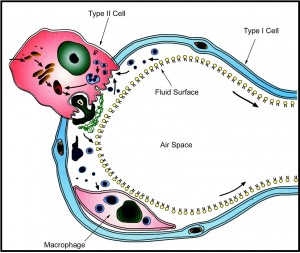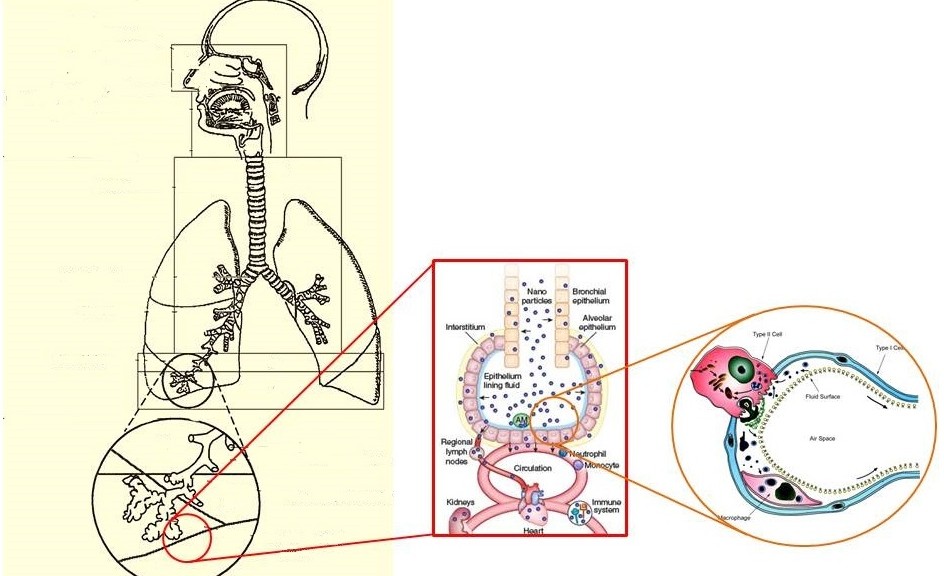“Toxicokinetics is what the body does to the chemicals, while toxicodynamics is what the chemicals do to the body.”
 Traditional PBPK models look at the entire human body from a physiome level. On the other hand, toxicodynamic or pharmacodynamic models generally focus on a particular organ or organ system and try to ascertain the changes occurring at that scale. Shown alongside is an example of a toxicodynamic (TD) model looking at the alveolar sub-system which is part of the lung. The alveolar system is responsible for protection of the body against inhaled foreign chemicals and particles. Any environmental particulate or inhaled drug encounters this system and causes dynamic changes to the functioning of the system often leading to immune responses. The final outcome of the foreign chemical depends largely on the processes outlined in the figure.
Traditional PBPK models look at the entire human body from a physiome level. On the other hand, toxicodynamic or pharmacodynamic models generally focus on a particular organ or organ system and try to ascertain the changes occurring at that scale. Shown alongside is an example of a toxicodynamic (TD) model looking at the alveolar sub-system which is part of the lung. The alveolar system is responsible for protection of the body against inhaled foreign chemicals and particles. Any environmental particulate or inhaled drug encounters this system and causes dynamic changes to the functioning of the system often leading to immune responses. The final outcome of the foreign chemical depends largely on the processes outlined in the figure.
Specific projects:

